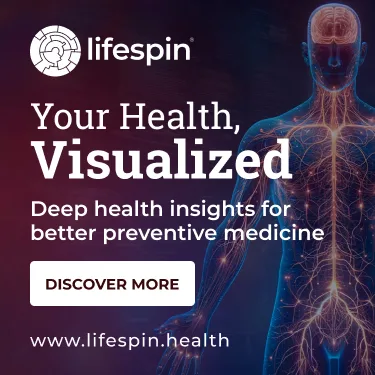Working across different clinical settings, I’ve seen firsthand how mental health evolves across a woman’s life. Women don’t just wake up one day with anxiety or depression—it’s often the accumulation of years of societal pressure, life transitions, and biological changes. Psychology gives us structured ways to understand this, with frameworks like Erikson’s psychosocial development (Erikson, 1968) and Bronfenbrenner’s ecological systems theory (Bronfenbrenner, 1979). But in the Middle East, there’s another layer—cultural expectations, stigma, and systemic barriers that shape how women experience mental health.
According to the World Health Organization (WHO, 2023), about 25% of Middle Eastern women face significant mental health challenges in their lifetime, yet many suffer in silence. The good news? Digital mental health innovations are providing new ways to break down barriers. But technology alone won’t solve everything—we need a nuanced, stage-by-stage approach that considers the realities of women’s lives.
Adolescence: The turbulent phase of identity formation
Adolescence is a rollercoaster. It’s the time when young people start figuring out who they are, but for young girls in the Middle East, the pressure can be overwhelming. UNICEF (2023) reports that 15% of adolescents in the region struggle with anxiety or depression. Social media has amplified these struggles, with platforms like TikTok and Instagram fuelling body image issues, comparison culture, and cyberbullying. Mental health influencers have helped to normalize discussions, but they’ve also led to an increase in self-diagnosis and misinformation.
With today’s adolescents spending more time online than ever, their beliefs about self-worth, success, and mental health are often influenced by what they see on their screens.
Dr Tina Mistry , Mental Health Consultant
Social learning theory (Bandura, 1977) suggests that behaviors are shaped by observation and reinforcement. With today’s adolescents spending more time online than ever, their beliefs about self-worth, success, and mental health are often influenced by what they see on their screens. Schools should play a bigger role in mental health education, not just teaching about symptoms of depression or anxiety but also equipping young people with critical thinking skills to navigate online content. Digital mental health tools like AI-powered chatbots and interactive self-help apps are proving useful, offering a safe space for teens to explore their feelings without judgment (Naslund et al., 2020). The key is ensuring these tools are credible, accessible, and integrated into wider support systems.
Early adulthood: The pressure to ‘have it all’
The twenties and early thirties are often painted as a time of freedom, ambition, and self-discovery, but in reality, they’re just as stressful as adolescence—if not more. The Arab Youth Survey (2023) found that 35% of young Middle Eastern women experience anxiety linked to career uncertainty, societal pressure to marry, and financial independence. Pop culture narratives of “having it all” don’t help, making women feel like they should be thriving in every aspect of life at once.
Cognitive-appraisal models (Lazarus & Folkman, 1984) explain how external stressors—like career expectations or family dynamics—interact with internal thought patterns, leading to cycles of anxiety and burnout. Many women in this stage experience imposter syndrome, particularly in male-dominated industries, reinforcing feelings of self-doubt. This is where digital mental health tools can be game changers. Teletherapy platforms provide culturally aware therapists, while digital coaching programs use CBT techniques to help women challenge negative thought patterns and build confidence (Al-Krenawi, 2021). The rise of digital self-care communities, where women can engage in therapy-adjacent practices like journaling and mindfulness, is also an encouraging trend.
Maternal mental health: The silent struggle of motherhood
Motherhood changes everything, and not just physically. Perinatal mental health is finally getting the attention it deserves, thanks in part to high-profile discussions from figures like Chrissy Teigen and Serena Williams. Yet in the Middle East, postpartum depression (PPD) remains underdiagnosed, affecting roughly 20% of mothers. The stigma around discussing mental health, combined with expectations of maternal perfection, means that many women struggle alone (Amer et al, 2024).
Attachment theory (Bowlby, 1969) emphasizes how maternal mental health shapes early childhood development. When a mother is experiencing PPD or anxiety, it can affect bonding and long-term emotional outcomes for her child. The solution isn’t just about awareness—it’s about systemic change. AI-driven screening tools could be integrated into routine maternal health check-ups, identifying women at risk of PPD early (Howard et al., 2018). Telehealth services can provide new mothers with accessible therapy options, especially in areas where in-person support is limited (Dennis & Chung-Lee, 2006). Trauma-informed maternity care should become the norm, ensuring that women with past psychological wounds don’t feel retraumatized during childbirth and early motherhood.
Perimenopause and aging: The mental health gap
As women transition into their forties and fifties, hormonal changes, shifting social roles, and cognitive decline can take a toll on mental health. Yet discussions about perimenopause and ageing are still relatively rare in the Middle East. A recent whitepaper indicated that 28% of older women in the region experience depression and anxiety, often exacerbated by isolation and a lack of tailored mental health resources (Mental Health in the Middle East, 2023).
Neurocognitive research (Sherwin, 2012) shows that declining estrogen levels can impact mood regulation, making women more susceptible to anxiety and depressive disorders. However, instead of addressing these concerns, society often sidelines aging women, reinforcing the idea that their struggles are just part of getting older. This needs to change. AI-driven cognitive training apps are already proving effective in improving memory and mental agility (Gates et al., 2019), while VR-based therapy offers immersive experiences that combat loneliness and enhance emotional well-being (Jerdan et al., 2018). Expanding digital mental health services to cater specifically to perimenopausal and aging women is crucial in ensuring that their psychological needs aren’t ignored.
Policy, technology, and the future of women’s mental health
Despite growing awareness, mental health funding in the Middle East remains limited, with only 2% of healthcare budgets allocated to mental health services (Patel et al, 2018). Policymakers need to step up, integrating digital mental health screening into primary healthcare and expanding training for healthcare providers in culturally tailored mental health care (Kalman et al, 2023). Collaboration between governments, private sector innovators, and tech developers could result in scalable, AI-driven interventions that make mental health support accessible to all women, regardless of socioeconomic status.
Women’s mental health isn’t a one-size-fits-all issue. It shifts across different life stages, influenced by biology, culture, and social norms. By applying lifespan psychology alongside digital innovation, we can create mental health interventions that actually meet women where they are. But technology alone isn’t enough—we need policy reform, education, and grassroots change. The Middle East has a chance to lead the way in creating a future where mental health is prioritized at every stage of a woman’s life. The question is, are we ready to make that happen?




















